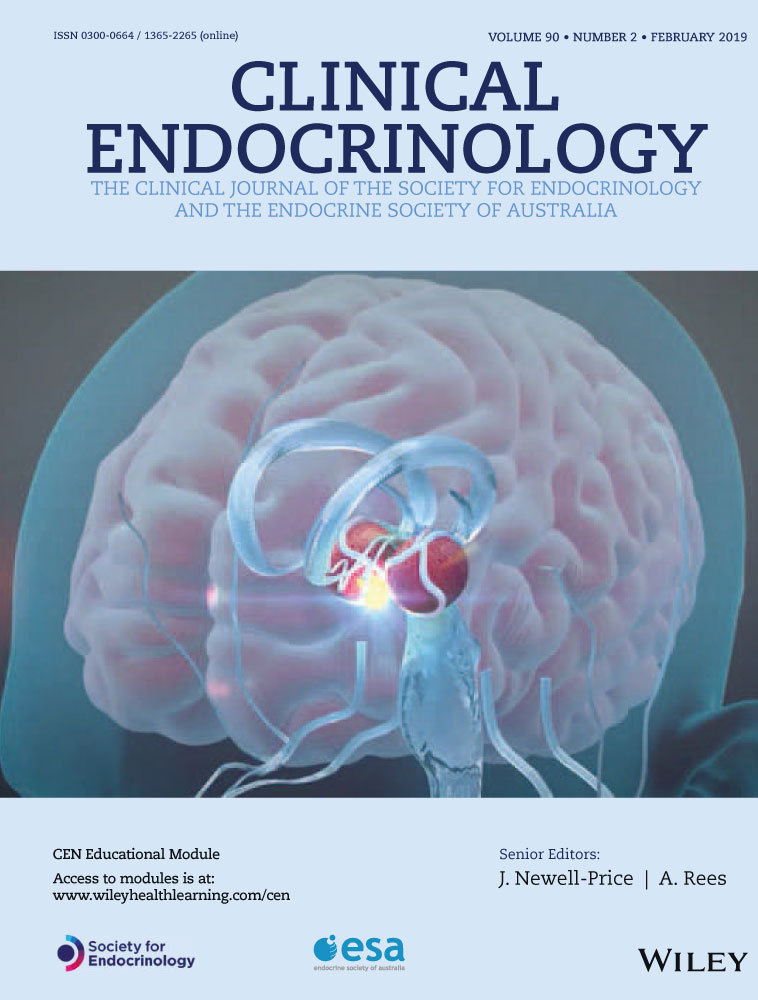Overexpression of Forkhead box Q1 correlates with poor prognosis in papillary thyroid carcinoma
Summary
Objective
Forkhead box Q1 (FOXQ1), a member of the forkhead transcription factor family, plays important parts in cell cycle, apoptosis, metabolism, immunology and tumour genesis. Its expression has been associated with poor clinical prognosis in various tumours. However, the clinical significance of FOXQ1 in papillary thyroid carcinoma (PTC) has not been fully studied. The purpose of this study was to investigate whether FOXQ1 is correlated with poor prognosis in PTC.
Design/Methods
We performed a retrospective study of 136 PTCs. Immunohistochemistry (IHC) was used to examine the expression of FOXQ1 in 136 PTCs and 47 nodular goitre specimens. Rank-sum test, chi-square test, Kaplan-Meier survival analysis, univariate and multivariate Cox analyses were used to investigate the clinical and prognostic significance of FOXQ1 expression in PTC.
Results
The comparison of PTC specimens with nodular goitre with papillary hyperplasia specimens revealed an upregulation of FOXQ1 in PTC. Overexpression of FOXQ1 was observed in 63.24% of PTC and correlated with classic variant, tall variant, distant metastasis, AJCC stage and recurrence. FOXQ1-positive expression was associated with shorter disease-free survival: median disease-free survival of FOXQ1-positive patients was 23 months compared with 128 months for FOXQ1-negative patients (Log-rank χ2 = 12.31, P = 0.00045). Additional independent risk factors in this study were multifocality (recurrence-free survival [RFS]: hazard ratio [HR] = 2.391, P < 0.05), extrathyroidal extension (RFS: HR = 3.906, P < 0.05) and positive expression of FOXQ1 (RFS: HR = 6.385, P < 0.01).
Conclusions
Our results indicated that FOXQ1 may be a useful additional biomarker to evaluate the progression of PTC and to predict likely relapse of disease.
CONFLICT OF INTEREST
The authors declare that they have no conflict of interest.




